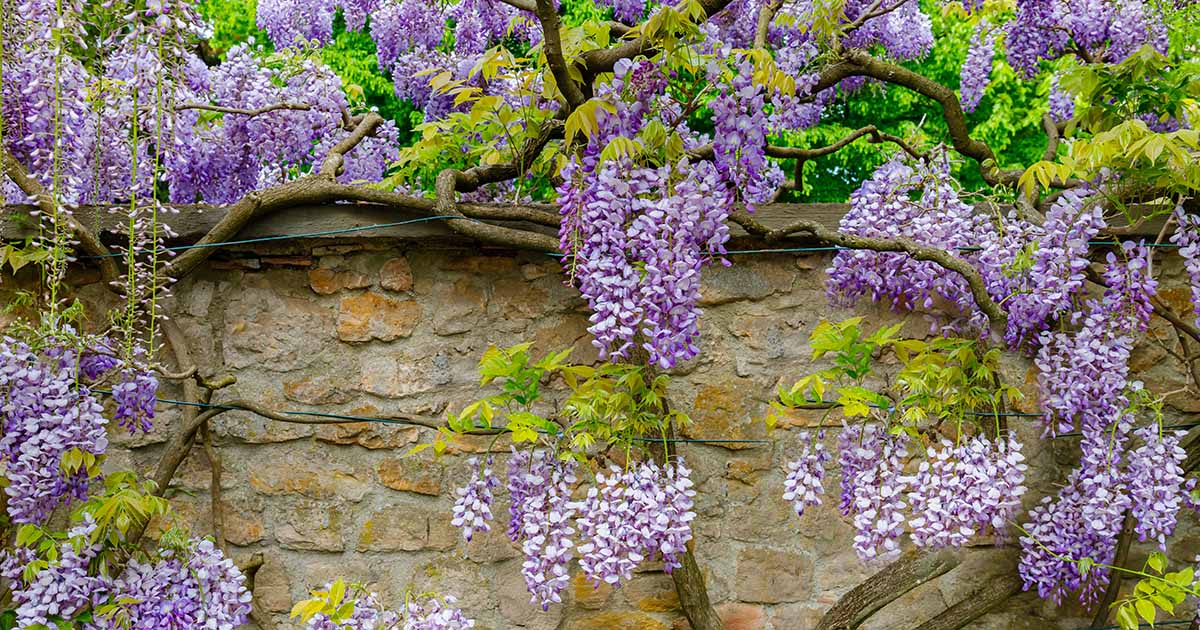
Wisteria is a beautiful and vigorous flowering vine known for its cascading clusters of fragrant and colorful flowers. Here's a step-by-step guide on how to grow wisteria:
Select the Right Location: Wisteria thrives in full sun, so choose a location in your garden that receives at least 6-8 hours of direct sunlight each day. Ensure that the area has well-draining soil.
Prepare the Soil: Wisteria prefers fertile and slightly acidic soil with good drainage. Before planting, amend the soil with organic matter such as compost or well-rotted manure to improve fertility and drainage. If your soil is heavy or clayey, consider adding perlite or sand to improve drainage.
Planting: Dig a hole that is larger than the root ball of the wisteria plant. Remove the plant from its container and place it in the hole, ensuring that the top of the root ball is level with or slightly above the surrounding soil. Backfill the hole with soil and gently firm it around the plant. Water thoroughly after planting to settle the soil.
Support: Wisteria is a climbing vine that needs sturdy support for proper growth. Install a trellis, arbor, or other support structure near the plant. Wisteria has strong twining stems, so make sure the support is secure and can withstand the weight of the vine as it grows.
Watering: Wisteria requires regular watering to establish and grow, especially during the first year. Water deeply once or twice a week, allowing the soil to dry out between watering sessions. Once established, wisteria is moderately drought-tolerant, but it still benefits from regular watering during dry periods.
Pruning: Proper pruning is essential for shaping and encouraging flowering in wisteria. Prune wisteria twice a year: once in late winter or early spring before the buds start to swell, and again after flowering in the summer. Remove any dead, damaged, or weak branches and trim back excessive growth to maintain the desired size and shape. Regular pruning also helps promote better flowering.
Fertilizing: Wisteria generally doesn't require heavy fertilization, but you can apply a balanced slow-release fertilizer in early spring to provide some nutrients. Follow the manufacturer's instructions for application rates. Avoid over-fertilization, as it can result in excessive foliage growth with fewer flowers.
Protecting from Cold: Wisteria is generally hardy but can be susceptible to frost damage in colder regions. If you live in an area with freezing temperatures, consider planting wisteria against a south-facing wall to provide some protection. Mulching around the base of the plant can also help insulate the roots during cold weather.
Pest and Disease Management: Wisteria is relatively pest and disease-resistant. However, it can occasionally be affected by pests like aphids, scale insects, or caterpillars. Monitor the plant regularly and take appropriate measures to control pests if necessary. Good air circulation and avoiding overhead watering can help prevent fungal diseases.
Training: As the wisteria grows, gently train the long shoots along the support structure, weaving them through or tying them to the structure. This helps create a neat and attractive appearance and encourages upward growth.
With patience and proper care, wisteria can reward you with breathtaking displays of fragrant flowers. Enjoy the beauty and elegance of this stunning vine in your garden or on pergolas, arbors, or fences.

No comments:
Post a Comment